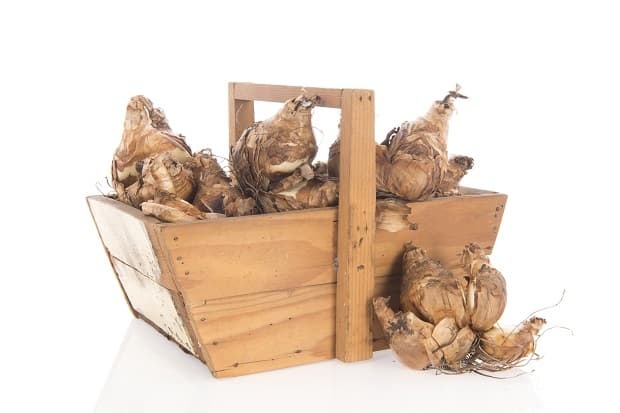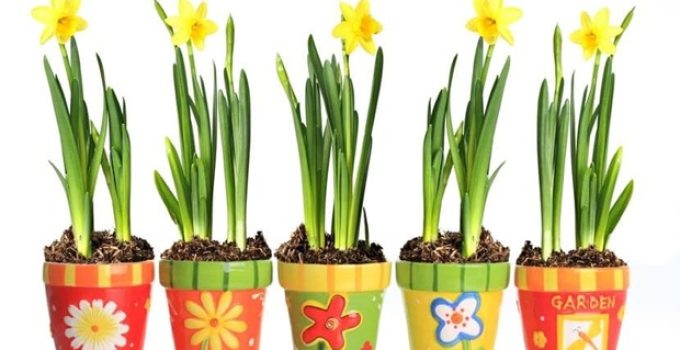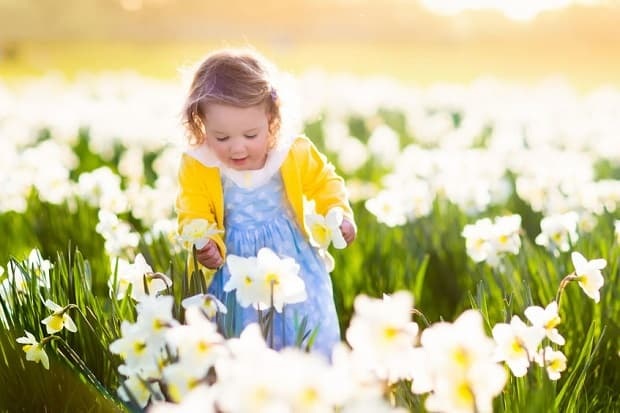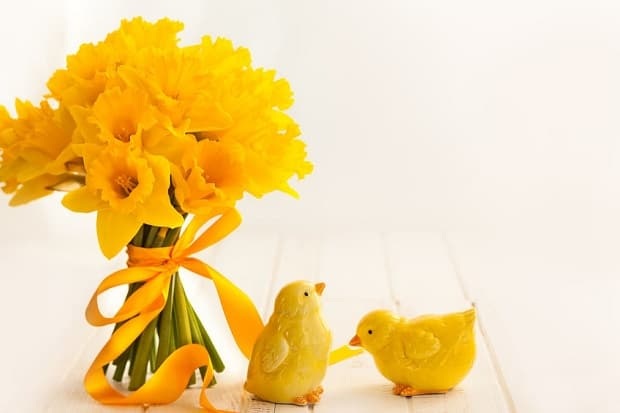Are Daffodils Poisonous?
Answer at a Glance: Daffodils are poisonous. They can cause illness when ingested and skin irritation when handled. The bulbs are the most toxic. [1]
Dig Deeper
- Poisonous Parts of the Daffodil
- Symptoms of Daffodil Poisoning
- Daffodil Pickers’ Rash
- Keep Daffodils Away from Children and Pets
- Daffodils Are “Poisonous” to Other Flowers
- References
Poisonous Parts of the Daffodil

Daffodils contain phenanthridine alkaloids like lycorine and calcium oxalate crystals throughout the plant, including the leaves, roots, stems, flowers, and sap. These are poisonous if ingested. The bulbs contain the highest concentration of these toxic alkaloids. [2]
Symptoms of Daffodil Poisoning
Daffodils serve up two separate modes of poisoning. First is the toxic chemical lycorine. According to Poison Control, ingesting it can cause abdominal pain, nausea, vomiting, and diarrhea. All parts of the daffodil contain lycorine, with the highest concentration in the bulb. [3]
Next, daffodils contain microscopic, needle-like oxalates that, when ingested, can cause skin irritation and severe burning of the lips, tongue, mouth, and throat. [4]
Daffodil Pickers’ Rash
Contact dermatitis, sometimes severe, can occur when handling tulips. The painful rash was named “daffodil picker’s rash” because it is common among those who pick daffodils for a living. Exposure to the plant’s sap, which contains calcium oxalate crystals and alkaloids, irritates the skin, causing the characteristic sores. [5]
Even though daffodil picker’s rash is more common among those who handle large quantities of daffodils, it’s crucial for those with sensitive skin or allergies to take precautions. Protect yourself by covering your skin with gloves, pants, shirts with long sleeves, and closed-toed shoes. This proactive approach will mitigate the risk of skin irritation. [6]
Remember, the sap can transfer to gloves and clothing after handling daffodils, so it’s vital not to touch your face or any exposed skin. [7]
Keep Daffodils Away from Children and Pets
More than 100,000 people call poison control centers across the United States each year for exposure to plants and mushrooms. [8] If you have children and/or pets, it is best not to choose daffodils for your landscape or flower arrangements, especially if you have a child that puts everything in the mouth or a curious pet that gets into everything. [9] Educate yourself on the toxicity of the plants in your home and landscape, and consider removing any that may be harmful to your loved ones.
Daffodils Are “Poisonous” to Other Flowers
An interesting study published in the Journal of Horticulture Science found that the sap of even one daffodil added to an arrangement of tulips and roses had a deleterious effect on the lifespan of all the flowers. For best results, create showy arrangements with only daffodils. [10]
If you want to add them to an arrangement with other flowers, The Farmer’s Almanac suggests isolating the daffodils and soaking them in water for as long as possible, then rinsing thoroughly before adding them to an arrangement. [11]
References
- [1][2] North Carolina State University Extension – “Narcissus. Common Name(s): Daffodils, Jonquils, Narcissus, Paperwhites, Tazettas.”
- [3][4][9] Poison.org – “Daffodils. Beautiful but Potentially Toxic.”
- [5] Julian, Bowers. “The nature and distribution of daffodil pickers’ rash.” Journal of Contact Dermatitis. December 1997. Vol. 37, No. 6, pp: 259-262
- [6][7] Safe at Work California – “Safey Meeting: Avoiding Skin-Irritating Plants.”
- [8] Texas Poison Center Network – “Know Your Plants.”
- [10] van Doorn, W.G. “Effects of Daffodil Flowers on the Water Relations and Vase Life of Roses and Tulips.” Journal of Horticulture Science. January 1998. Vol. 123, No. 1, pp: 146-149
- [11] Almanac – “How to Grow Daffodil Flowers: The Complete Guide.”





